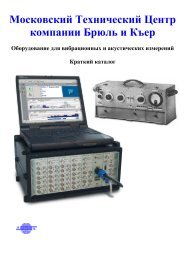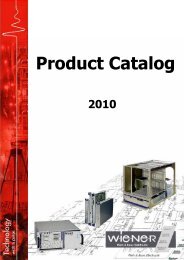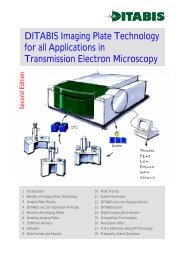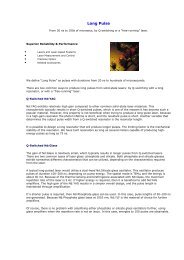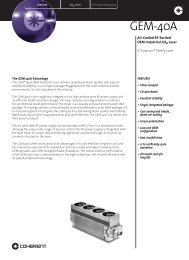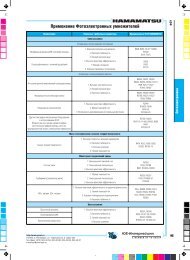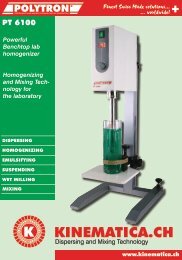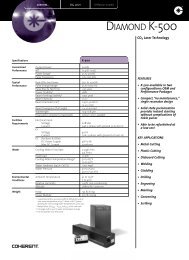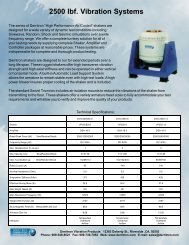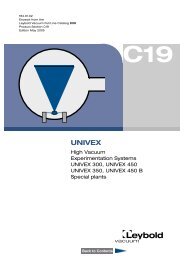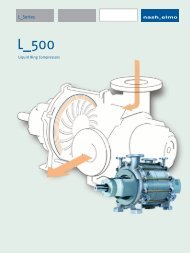Laboratory Product Catalogue Total Laboratory Science Support
Laboratory Product Catalogue Total Laboratory Science Support
Laboratory Product Catalogue Total Laboratory Science Support
Create successful ePaper yourself
Turn your PDF publications into a flip-book with our unique Google optimized e-Paper software.
Sartobind ®<br />
The Pace Maker in Membrane Adsorber Technology<br />
Unique microporous structure<br />
Sartobind Membrane Adsorbers display<br />
a microporous structure with a pore size of<br />
0.45 or > 3 µm. These orders of magnitudes<br />
are larger than conventional chromatographic<br />
gel matrices. Molecules are transported<br />
by convective flow to ligands.<br />
Characteristics of Membrane<br />
Adsorbers (MA)<br />
– Ready-to-use units<br />
– Simple handling with a syringe or with<br />
a pump<br />
– Pore sizes > 3 and 0.45 µm<br />
– Negligible diffusion limitation<br />
– Low bed heights between 0.3 and 4 mm<br />
– Scalable to process dimension with<br />
Sartobind SingleSep disposable capsules<br />
and Sartobind MultiSep reusable modules<br />
– Flow starts already at 10 kPa<br />
– Robust high performance separations<br />
– No bed cracking, channeling or air<br />
entrapment<br />
– 1 m 2 membrane ≅ 100 m 2 internal surface<br />
– Flow rate of ion exchange membranes<br />
> 80 ml/min 0.1 MPa (linear flow rate:<br />
> 4,800 cm/h)<br />
– Chemistries: strong and weak ion exchange,<br />
coupling, affinity and metal chelate ligands<br />
Speed up 100 times<br />
In a simple experiment using a Sartobind ion<br />
exchange unit with 5 cm 2 membrane area<br />
and a luer lock syringe, you can achieve a<br />
flow rate of about 10 ml per 0.5 second by<br />
hand which corresponds to a linear flow rate<br />
of more than 14,000 cm/h. Even under these<br />
conditions, you’ll attain complete capture of<br />
the protein. Just try it (sample: cytochrome c,<br />
buffer: 10 mM sodium phosphate pH 7.0,<br />
unit: Sartobind S 5).<br />
Sartobind membrane types<br />
– Sartobind S, Q, C and D ion exchange<br />
– Sartobind IDA (iminodiacetic acid)<br />
metal chelate<br />
– Sartobind aldehyde-activated<br />
– Sartobind epoxy-activated<br />
– Sartobind Protein A (recombinant)<br />
Sartobind applications<br />
Purification and concentration<br />
– Proteins, viruses, viral particles, monoclonal<br />
antibodies, oligonucleotides<br />
Contaminant removal<br />
– DNA, endotoxins, viruses, host cell, proteins<br />
Protein Purification by Membrane Adsorbers Membrane<br />
Chromatography<br />
Low unspecific adsorption<br />
The basis for all Sartobind membranes is a<br />
stabilized reinforced cellulose. It is made from<br />
regenerated cellulose and during the production<br />
to Sartobind it runs through a number<br />
of stabilization and grafting steps until a<br />
chromatographic matrix is formed on the<br />
cellulose backbone. Principally any ligands<br />
known from conventional chromatography<br />
can be covalently bound on the matrix.<br />
129



